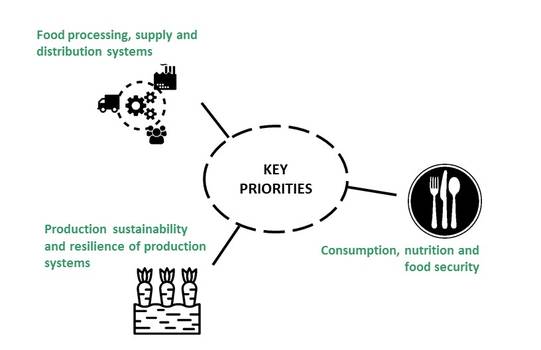Lusaka, Zambia
Background
Lusaka is the capital city of Zambia, and the main demographic and economic center of the country. Zambia is located in Southern Africa and has no access to the sea. With its humid sub-tropical climate, agriculture is the country’s main source of income and jobs, followed by the copper mining and energy industries. Due to rapid urbanization, Lusaka faces issues such as vulnerability to extreme weather events, pollution, inadequate waste management, unemployment, and lack of basic services.
The city region of Lusaka
Lusaka city region is made of 8 districts: Lusaka, Mumbwa, Chibombo, Chisamba, Shibuyunji, Chongwe, Kafue, and Chilanga. This area is defined on the basis of the origin and flows of the food commodities that represent the typical food basket of the city region dwellers. It has been estimated that around 60% of the food consumed in Lusaka is produced in the city region area. The area covers 4.3 million hectares and includes districts from both the Lusaka and Central Provinces.

Main challenges of the Lusaka city region food system
A first appraisal of the different components of the food system in Lusaka city-region was conducted in collaboration with the University of Zambia. It highlighted 3 key priorities for Lusaka city region:

- Production sustainability and resilience of production systems: Despite local agroecological and economic potential, the demand for horticultural products is higher than the local supply. Only 25% farmers are using conservation agriculture practices. Farmers are mostly provided inputs by the government through the Farmer Input Support Programme (FISP) programme, which has not, generally, encouraged crop diversification.
- Food processing, supply and distribution systems: Most products from small scale farmers in the selected districts are sold raw with little value addition, which results in important food losses and waste. In the city region smallholder farmers mostly sell their products through middlemen and brokers, especially at Soweto market. The value chain is strongly driven by brokers and commission agents that represent a consolidated informal system that dictate the terms of trade in terms of price, quality and volumes.
- Consumption, nutrition and food security: Poor households in Lusaka district have a nutritionally inadequate diet: while maize remains an important component of poor urban households’ diet in Zambia, consumption of fruit and vegetables is low, especially among vulnerable groups/high density neighborhoods.
The way forward
Within a multistakeholder and participatory process, policy strategies and interventions plans have been identified to strenghten the city region food system. For instance:
- Promote national Food-based Dietary Guidelines and the taxation of junk foods.
- Promote sustainable use of agrochemicals by training and inspections.
- Reinforce implementation of existing legislation, particularly the Food and Drugs Act.
- Promote an agribusiness incubation system.
- Revise agriculture trade policies and strengthen their enforcement to be more favorable to farmers, especially women farmers.








